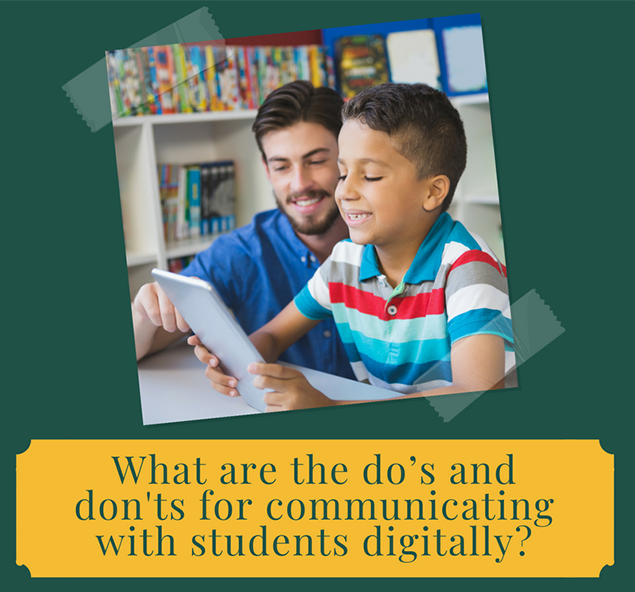Setting Boundaries for Teacher- Student Online Communication
Posted by Network Support · Leave a Comment
Setting Boundaries for Teacher-Student Online Communication
In today’s world, digital (online or electronic) communication is a common way to communicate. Applications like WhatsApp, Skype and Facebook Messenger allow teachers and students to communicate more freely and frequently with each other. These apps also allow users to share images, videos and documents. It is important to consider, however, that as communication becomes more accessible, the need for boundaries in online interaction increases. These boundaries are necessary for safeguarding students and protecting teachers from false allegations. Here are some ways by which teachers can set and maintain boundaries when communicating digitally with their students.
Anytime, Anywhere: Although digital communication can be used 24/7, it is recommended that teachers restrict communication with students to specific days and/or times.
No Private Messaging: Teachers must always respond to students in group chats and avoid private messaging. This increases transparency of communication. Even if students post individual queries on private chats, their concerns should be addressed publicly. For initiating discussions teachers can use public platforms like Twitter and blogs so that private messaging can be avoided.
Appropriate Language: While it is important to connect with one’s students, teachers must remember that they are not “friends” with their students. Part of adhering to this rule includes using suitable language in communication with students, like in the following examples:
- Avoid using terms of endearment or other inappropriate names with students.
- Keep the voice of communication formal avoiding use of abbreviations and emoticons.
- Avoid making, forwarding or responding to emails or posts that are offensive or inappropriate for the classroom.
- Refrain from using affectionate greetings or words that might give students mixed signals and confuse them about your intentions.
Information Sharing: Many schools insist that teachers keep their personal lives separate from their professional lives. This includes sharing or discussing personal information with students. Teachers must refrain from sending personal photos and audio-video clips to students, and instruct students to do the same.
Inform Parents: As much as possible, keep parents informed about class and school activities. For example, inform parents about online activities that have been given in class, and of chat groups, pages or websites in which students are included.
Maintain Records: Technological advancements have simplified the process of maintaining records – it’s easy to save or upload information to the Cloud. Keeping records of conversations, chats and other digital activities with students ensure transparency, and safeguard teachers from false allegations.
Teachers can share rules about online boundaries with students at the start of school year. In instances when the boundaries blur, consider the following situations:
- A student shares information about being abused at home, or elsewhere.
- A student tries to engage the teacher in inappropriate relationships.
The best response to these situations would be to inform another staff member, preferably school counselor first, and decide on a course of action. In such situation, it is imperative to remember that the primary goal is to protect students, and that every action taken must reflect this goal.
Like this article for teachers?
Browse the Professional Learning Board COURSE CATALOG to find related online courses for teachers in your state. Professional Learning Board is a leading provider of online professional development classes that teachers use to renew a teaching license or renew a teaching certificate.





